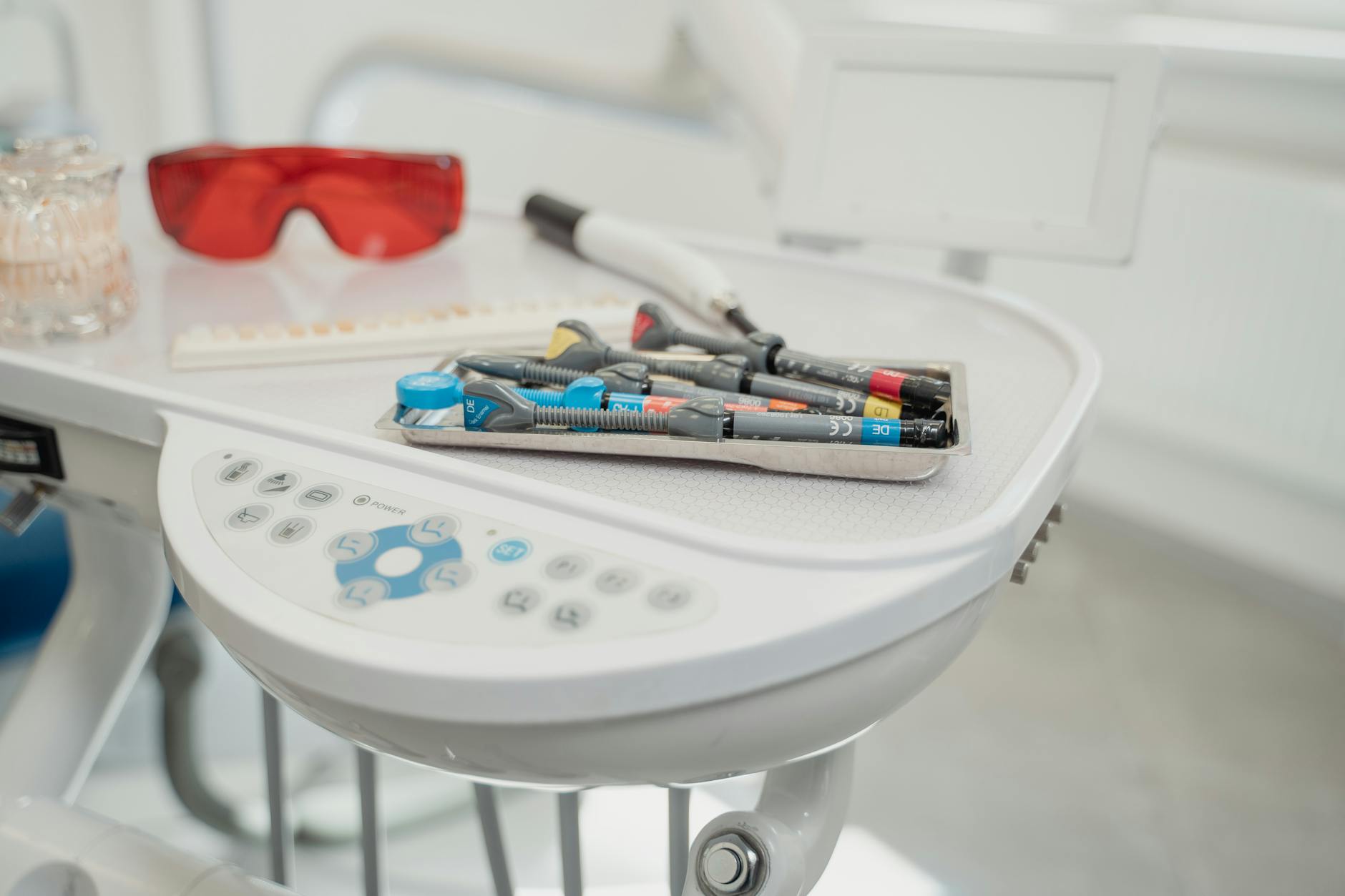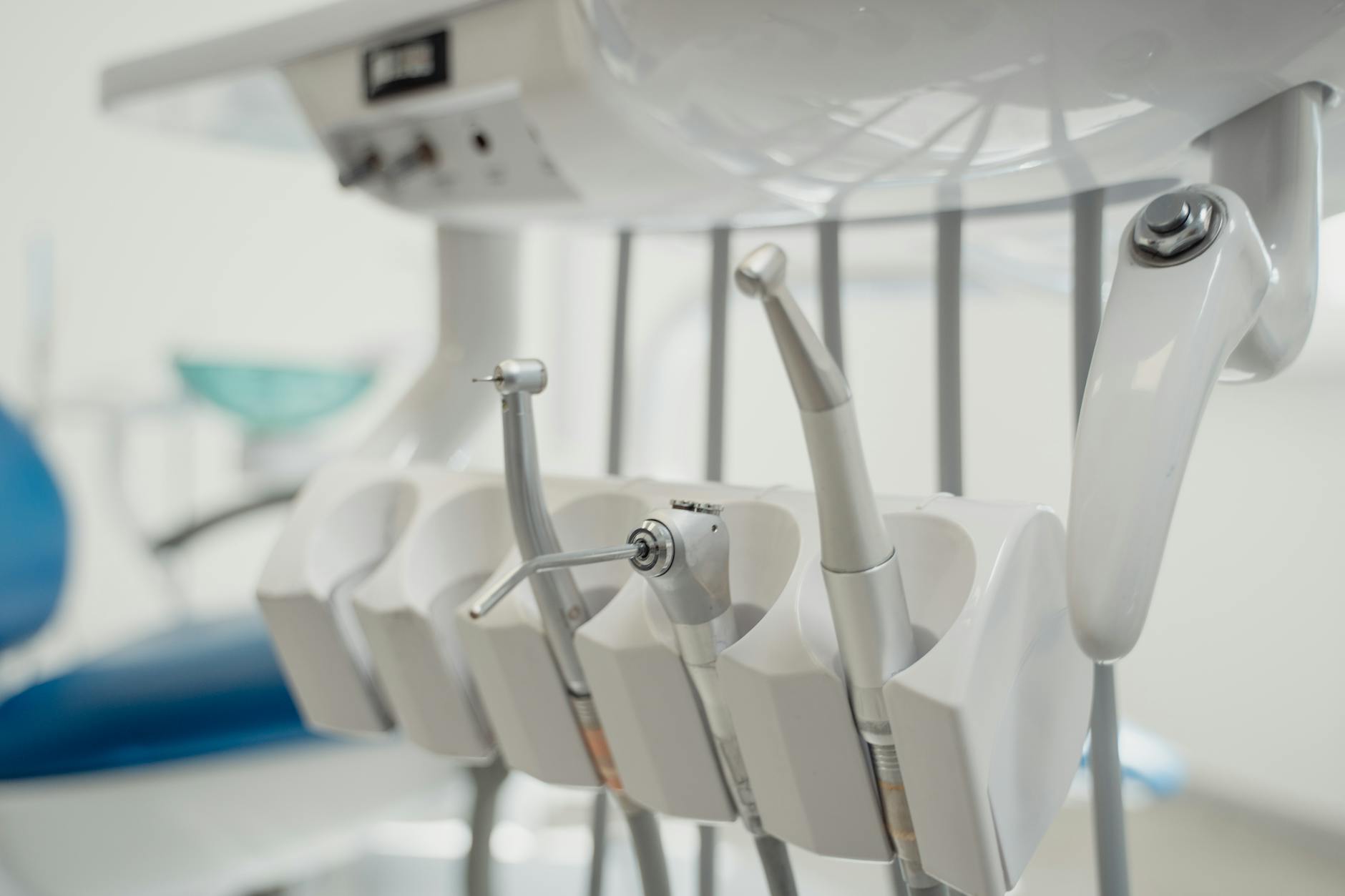Understanding Non-Invasive Enhancements
Non-invasive enhancements are small, conservative dental treatments that freshen your smile without drilling away healthy tooth structure. They focus on gentle changes—brightening, smoothing, reshaping, or aligning—that often require little to no recovery time. These options are best for mild to moderate concerns and can be combined for a natural, balanced result.
- Professional whitening to lift stains and brighten tooth color.
- Microabrasion or polishing to remove superficial spots or roughness.
- Resin infiltration to blend early white-spot lesions on enamel.
- Minor enamel recontouring to even out edges and small overlaps.
- Conservative bonding to repair chips or close small gaps with tooth-colored resin.
- Clear aligners to gradually straighten teeth without brackets and wires.
These methods work best when teeth and gums are healthy and problems are limited to color, texture, or small shape issues. Deeper discoloration, large fractures, or significant bite problems may need more involved care. Clear aligners, in particular, have evidence supporting their clinical use for selected bite corrections while offering an esthetic, appliance-free look during treatment [1].
If alignment is your main concern, discreet clear aligner treatment can address crowding, spacing, and mild bite discrepancies while preserving enamel. Treatment planning is tailored to your goals and oral health, with digital scans guiding the tooth movement sequence and expected timeline. Learn more about discreet clear aligner treatment at our Invisalign page.
Keeping results stable is just as important as getting them. Daily brushing and flossing, fluoride where appropriate, planned touch-ups for color, and retainers after aligner therapy help your smile last. A non invasive smile enhancement checkup can confirm you’re a good candidate, review risks and alternatives, and map out a simple maintenance plan. For visit planning, see our current hours.
Benefits of a Smile Enhancement Checkup
A smile enhancement checkup gives you a clear, personalized plan to improve your smile with the least amount of drilling or downtime. In one visit, we assess tooth color, shape, and alignment alongside gum and bite health, then match simple options to your goals. You leave with realistic expectations, a sequence of steps, and maintenance tips so results last.
During the exam, we document your baseline with photos and, when helpful, digital scans. We look at shade, surface texture, and stain patterns to see what will respond to polishing, microabrasion, or whitening. We also check enamel for white spots, early wear, or tiny chips, and we screen gums and bite contacts to ensure changes are stable. If we see issues that need different care—like active decay or gum inflammation—we’ll address those first for safety.
The checkup helps you choose low‑impact treatments that fit your timeline and comfort. For color concerns, options like professional teeth whitening can lift extrinsic stains and brighten evenly. For superficial spots or roughness, gentle polishing or microabrasion may smooth the enamel. We outline what you’ll feel, how many visits are likely, and ways to reduce sensitivity when relevant.
Small shape refinements are often possible without invasive work. Minor edge recontouring can even out asymmetries, and conservative dental bonding can close tiny gaps or repair chips while preserving tooth structure. We discuss color matching, expected longevity, and touch‑up needs so you can weigh benefits and trade‑offs before starting.
Another benefit is prevention planning. We review daily care, fluoride use when appropriate, and habits that affect color or wear. If alignment is part of the plan, we explain how retainers protect your result after tooth movement. A non invasive smile enhancement checkup ties these pieces together, confirming candidacy, sequencing the simplest steps first, and setting you up with a straightforward maintenance routine.
Common Non-Invasive Techniques
Non-invasive techniques freshen your smile with little to no drilling. They focus on color, texture, minor shape, and gentle alignment changes while preserving healthy enamel. Common options include professional whitening, microabrasion and polishing, resin infiltration for white spots, small enamel recontouring, conservative bonding, and clear aligners. These are quick, comfortable steps with minimal recovery.
Professional whitening uses dentist-guided peroxide gels to lift stains from coffee, tea, or smoking. In-office treatments work faster, while custom take-home trays let you brighten gradually at home. We plan shade goals and sensitivity care ahead of time, and we note that fillings or crowns will not lighten the same way as enamel.
Microabrasion and selective polishing remove a very thin outer layer of enamel to reduce superficial spots and smooth rough areas. This is often chosen for shallow brown or white surface marks that do not respond evenly to whitening. The procedure is brief, and the enamel is finished with a smooth, glossy surface that is easy to clean.
Resin infiltration helps blend early white‑spot lesions, such as marks that appear after braces. A low‑viscosity resin flows into the porous enamel and changes how light passes through the spot, making it look closer to the surrounding tooth. It is a conservative, add‑on approach that does not require drilling and can be combined with whitening for overall brightness.
Minor enamel recontouring evens out small chips, high corners, or slight overlaps by reshaping only a fraction of a millimeter. When a bit of volume is needed instead, conservative bonding adds tooth‑colored resin to repair a chip or close a tiny gap without removing healthy tooth structure. Both methods aim for natural contours and smooth transitions you can floss and brush easily.
Clear aligners gently move teeth to improve mild crowding or spacing while keeping your smile presentable during treatment. Tooth‑colored attachments and small enamel polishing may be used to guide movement, and retainers help keep the result stable afterward. A non invasive smile enhancement checkup ties these choices together, confirming what will work best and sequencing the simplest steps first.
When to Consider Enhancements
Consider non-invasive enhancements when your teeth and gums are healthy but you want small, natural-looking improvements in color, smoothness, or minor shape. They are a good fit for surface stains, tiny chips, slight edge unevenness, or subtle crowding/spacing. Many people choose them ahead of a life event, after completing orthodontics, or when coffee/tea stains keep returning despite good home care.
The right time is after basic health needs are met. Active cavities, gum inflammation, or tooth pain should be addressed first so enhancements last and feel comfortable. Planning also matters: if whitening is part of the goal, it usually comes before any bonding so new resin can be matched to your brighter shade. Sensitivity can be minimized by spacing steps, using gentle strengths, and adding fluoride where appropriate. Scheduling soon after a professional cleaning helps colors blend and lets us see true enamel shades.
Non-invasive steps work best for mild changes. Polishing or microabrasion can soften superficial marks; small enamel recontouring can even edges; and conservative bonding can discreetly repair a chip or close a tiny gap while preserving tooth structure. Clear aligners may help mild crowding or spacing without affecting enamel, followed by retainers to keep the result stable. We’ll map out a simple sequence so each step supports the next and maintenance stays easy.
When your concerns go beyond surface changes—such as deeper discoloration, multiple worn edges, or broader symmetry goals—minimally prepared options may not be enough. In those cases, you might explore porcelain solutions that can reshape and recolor in a controlled way; learn more about broader color and contour changes on our porcelain veneers overview.
If a tooth is heavily cracked, has large failing fillings, or is missing structure, reinforcement rather than enhancement is usually the first step. Restoring strength and function can also improve appearance; see our page on crowns and bridges for structural support for situations where durability is the priority. A non invasive smile enhancement checkup helps confirm candidacy, prioritize the least invasive steps first, and align the plan with your timeline and home-care routine.
Key Concepts Explained
Non‑invasive smile enhancements focus on small, careful changes that protect healthy tooth structure. The goal is to improve color, texture, or minor shape and alignment with little to no drilling and minimal recovery. A focused exam helps match the right technique to your teeth, your goals, and your timeline so results look natural and last.
Think of two basic approaches. Additive steps place material onto the tooth, such as conservative bonding to repair a chip or resin infiltration to blend a white‑spot mark. Subtractive steps smooth or reshape only a thin outer layer, such as microabrasion for shallow surface stains or gentle recontouring of a rough edge. Whitening sits in its own category: peroxide gels lift stains from enamel without changing tooth shape. Because these methods act differently, your plan often combines one or two for a balanced result.
Sequencing matters. If brightening is part of the goal, whitening usually comes first so any future bonding can be matched to the new shade. If alignment is needed, clear aligners typically come before final shape touch‑ups; retainers follow to keep teeth steady. Materials also behave differently: enamel can lighten, but existing fillings or bonding do not, so color planning avoids mismatches. Your dentist will set expectations for feel, number of visits, and routine care between steps.
Safety and comfort guide each choice. Small, well‑planned changes preserve enamel and help keep teeth easy to clean. Temporary sensitivity can happen with whitening or after light enamel polishing; pacing treatments and using desensitizing care often helps. Not every concern is a fit for non‑invasive methods—deep discoloration, larger fractures, or bite problems may need different solutions. In those situations, we start by stabilizing health and function, then return to esthetics when appropriate.
Maintenance is simple but important. Daily brushing and flossing, smart drink and snack habits, and fluoride where appropriate help color and smoothness hold up. Periodic touch‑ups, like occasional whitening or a small bonding polish, keep the finish fresh. A non invasive smile enhancement checkup ties these concepts together, confirming candidacy, choosing the simplest path first, and mapping a plan you can maintain with ease.
Risks and Limitations
Non‑invasive options are low risk, but not risk‑free. The main trade‑offs are sensitivity, color mismatch with existing fillings, and the fact that these methods can only make small changes. They do not fix deep cracks, large fractures, or major bite problems. A careful exam sets safe limits and helps you weigh benefits against likely upkeep.
Whitening can cause temporary cold sensitivity, especially in the first 24–48 hours. Teeth usually settle with spacing treatments out and using gentle strengths when appropriate. Fillings and crowns do not lighten, so color differences can show if you already have visible restorations; sometimes those need replacing after whitening to match. Deep internal stains or discoloration from past trauma may not respond well and may need different solutions.
Microabrasion and polishing remove only a very thin outer layer of enamel to smooth shallow spots. Because it is a surface step, very deep marks will remain. Resin infiltration can blend early white‑spot lesions, but very opaque or deep spots may not disappear fully. Bonding is conservative but can chip or stain at the edges over time; touch‑ups or repolishing may be needed. With any subtractive smoothing or additive bonding, the goal is tiny, well‑planned changes so your bite and cleaning stay easy.
Clear aligners work best for mild crowding or spacing. They require consistent daily wear; if trays are not worn as directed, teeth may not track to the planned position. Small tooth‑colored attachments and minor enamel polishing between teeth may be part of the plan to guide movement. Aligners have limits for complex rotations, severe bite corrections, or major tooth position changes—those may need a different orthodontic approach. Retainers are needed after movement; without them, some relapse is likely.
Gum health and habits affect results. Active gum inflammation, clenching or grinding, and frequent dark drinks can shorten how long improvements last or increase maintenance needs. Existing sensitivity, thin enamel, or many front‑tooth fillings can also narrow the safest options. A non invasive smile enhancement checkup reviews these factors, explains likely feel and longevity, and outlines alternatives when a more durable or restorative path would be wiser.
Practical Home Care Tips
Small, steady habits at home keep non‑invasive results bright and smooth. Brush twice a day for two minutes with a soft brush and a low‑abrasive fluoride toothpaste. Clean between teeth daily with floss or interdental brushes so stain and plaque do not collect at the edges. Gentle, consistent care beats scrubbing hard.
If you whiten, space out dark drinks like coffee, tea, and red wine. Sip water after them, and wait about 30 minutes to brush if the drink was acidic. If teeth feel sensitive, use a desensitizing fluoride toothpaste and take a night off from whitening; brief, well‑spaced sessions usually feel better. Remember that fillings do not lighten, so keep the shade steady before planning any future bonding.
Protect smooth enamel and any bonding by avoiding pens, ice, and hard seeds with your front teeth. Use non‑abrasive toothpaste to reduce micro‑scratches that can dull the shine. If a bonded edge feels rough later, a quick polish visit often restores the finish. Keep up with routine cleanings so stain does not build where you smile most.
For aligners or retainers, wear them as directed and keep them clean. Rinse when you remove them, brush them gently with mild soap and cool water once a day, and avoid hot water that can warp the plastic. Always store them in a case, not a pocket or napkin. After treatment, nightly retainer wear helps hold your result.
Mind daily habits that affect color and wear. Limit frequent sipping and snacking, especially on acidic or sugary items. After citrus or fizzy drinks, rinse with water and give teeth a short break before brushing. Stay hydrated; sugar‑free gum can help dry mouth by boosting saliva. If you clench or grind, ask about a night guard to protect edges you just refined.
Finally, match tools to your mouth. A soft brush, the right fluoride level, and the best interdental cleaner for your spaces make care easy. If you are unsure what to choose, a non invasive smile enhancement checkup can tailor these tips to your teeth and timeline.
The Role of Regular Checkups
Regular checkups keep your smile healthy so small, non‑invasive changes work and last. At these visits we catch early problems, clean away stain and plaque, and confirm that gums and bite are stable. This healthy base lets whitening, polishing, minor recontouring, bonding, or clear aligners look natural and feel comfortable.
During a checkup we review teeth, gums, and your bite, looking for early signs of decay, gum inflammation, or wear before they grow. We note color, surface texture, and any white spots or tiny chips, then discuss simple options that fit your goals. Cleaning removes buildup that can dull results and helps us see your true enamel shade; photos and, when needed, X‑rays document a clear baseline.
Checkups also guide the order of care. If brightening is part of the plan, whitening usually comes first so any bonding can match the new shade. If you are in aligners, visits confirm trays are tracking and keep small enamel polishing or attachment steps on schedule; after movement, retainers are checked to hold the result. For microabrasion or bonding, we can repolish edges over time so the finish stays smooth.
We match visit timing to your needs. Many patients do well on a 6‑month rhythm; higher stain, dry mouth, or braces/aligners may call for shorter intervals, while very low‑risk mouths may stretch longer. At each visit we review home care, fluoride where appropriate, and habits like coffee or clenching that affect color and wear. A non invasive smile enhancement checkup ties this together: it confirms candidacy, sets a simple sequence, and keeps small touch‑ups on track.
Most of all, regular checkups protect your investment. They help prevent small issues from becoming big, reduce surprise repairs, and keep your smile looking even and bright. If something changes—new sensitivity, a chipped edge, a retainer that feels tight—we can adjust early with the least invasive fix.
How Enhancements Boost Confidence
Small, non‑invasive enhancements boost confidence by making your smile look cleaner, brighter, and more even without big procedures or long recovery. When teeth look natural and balanced, people often smile more freely, speak up more, and feel better in photos and face‑to‑face moments. Subtle, well‑planned changes can shift daily interactions in a positive way.
Color is a big part of first impressions. Lifting surface stains and evening out shades helps teeth look healthy and well cared for. Smoother enamel and blended white‑spot areas keep light reflecting evenly across the smile, so eyes are not drawn to a single mark or edge. That harmony reduces self‑consciousness and makes it easier to focus on what you are saying, not how your teeth look.
Small shape updates can change how a smile “reads” without changing who you are. Softening a sharp corner, polishing a rough edge, or adding a touch of bonding to a tiny chip makes contours look intentional and tidy. Even minor alignment improvements can balance the smile line and help lips and cheeks frame the teeth more evenly. These refinements also make cleaning easier, which can reduce stain buildup and keep breath fresher—another quiet confidence boost.
Comfort matters, too. Because these steps preserve healthy enamel and are planned around your bite and gums, teeth usually feel normal right away, so you can return to work or school without worry. Clear expectations—how a step will feel, how many visits it may take, and how to maintain results—help you feel in control instead of guessing.
A non invasive smile enhancement checkup ties confidence and planning together. We confirm candidacy, set realistic goals, and sequence the simplest steps first so you see progress early. Photos and shade guides track changes, and a light maintenance plan keeps results steady. The outcome is a smile that looks like you on your best day—natural, tidy, and easy to maintain—so your confidence comes from something you can trust.
Patient Experiences and Testimonials
Patients who choose small, non‑invasive updates often describe the process as comfortable, quick, and easy to fit into a regular day. Many say the change looks “fresh” and natural rather than obvious or “done.” They appreciate knowing the plan ahead of time, seeing photos for comparison, and starting with the lightest touch first. Feedback commonly highlights feeling more at ease in photos and conversations soon after care.
With whitening, patients notice a brighter shade within days; some feel brief cold sensitivity that fades when sessions are spaced and aftercare is followed. They like that enamel shape does not change, and they value clear guidance about matching any future bonding to the new color. People who try microabrasion or careful polishing report that shallow spots look softer and that teeth feel smooth to the tongue, with no downtime.
For resin infiltration, patients are often relieved that white‑spot marks blend without drilling. Those who choose minor edge recontouring or small bonding to fix a chip or tiny gap say the teeth look more “tidy” and that floss glides more easily. They also understand that a quick polish visit in the future can refresh the shine if edges feel a bit rough later.
Aligner patients frequently note that trays are discreet and that they can speak and work normally, as long as they wear them as directed. They appreciate progress checks, small course corrections when needed, and the simplicity of switching to retainers after movement to hold the result. Most describe the overall experience as steady, step‑by‑step progress rather than a single big procedure.
At a non invasive smile enhancement checkup, people say it helps to set realistic goals, review limits, and choose reversible steps first. They value honest talk about what will change, what will not, and how to maintain the result with home care and periodic touch‑ups. During follow‑ups, we invite open feedback, adjust timing to comfort, and keep any shared photos private unless someone gives written consent. The common theme across stories is simple: small, well‑planned changes that look like you—just a bit brighter, smoother, and easier to maintain.
Combining Enhancements with Routine Care
Non‑invasive enhancements work best when they are paired with steady routine care. Cleanings and checkups keep gums healthy, remove stain, and reveal true enamel shade so whitening, polishing, bonding, or aligners look natural. We plan the sequence with you—brighten first, then match any bonding; aligners before final edge polishing; retainers afterward—so small changes last and feel comfortable.
At visits, we start by reviewing gum health and your bite, then clean away plaque and surface stain to set a clear baseline. If whitening is part of your plan, we usually do it before color‑matching any resin so shades line up. For sensitive teeth, we can pace treatments and use fluoride where appropriate to keep you comfortable. If you wear aligners, checkups confirm trays are tracking, let us make small course corrections, and set you up with retainers to hold the final position.
Home care keeps the finish bright and smooth between visits. Brush twice daily with a soft brush and a low‑abrasive fluoride toothpaste, and clean between teeth so stain does not collect at edges or around attachments. After acidic drinks, rinse with water and give teeth a short break before brushing so enamel stays strong. If a bonded area ever feels rough, a quick office polish can restore the shine without drilling.
Planning also includes habits that protect results. Spacing dark drinks, using a straw when practical, and scheduling occasional whitening touch‑ups help color stay even. If you clench or grind, a night guard can protect newly smoothed edges and bonding. For patients who feel anxious about dental visits, gentle oral sedation options may help you complete care calmly and safely.
Most of all, we keep the plan simple and reversible whenever possible. A non invasive smile enhancement checkup ties routine care and esthetics together by confirming candidacy, setting a clear order of steps, and outlining easy maintenance. With this approach, small changes fit into your normal preventive rhythm—and your smile looks like you, just a bit brighter and more even, for longer.
Consultation: What to Expect
Your visit starts with a conversation about what you want to change and what you want to keep. We review your health history, note any sensitivity, and look at your teeth, gums, and bite to be sure simple options are safe. You leave with a step‑by‑step plan that protects enamel and fits your timeline.
We document a clear baseline with photos and, when helpful, a quick digital scan. Shade guides help set realistic color goals. We map where stain collects, check for white‑spot areas, and look for tiny chips or rough edges. Gums and bite contacts are checked so small changes stay comfortable and stable. If you do not have recent X‑rays and we see signs of decay or pain, we may take updated images to rule out hidden problems before cosmetic steps.
Together we review conservative choices that match your goals. For color, we discuss dentist‑guided whitening and how to prevent or manage temporary sensitivity. For surface marks, gentle polishing or microabrasion may smooth the outer enamel. Early white spots may respond to resin infiltration, and minor edge recontouring can even small asymmetries. When a little volume would help, conservative bonding can repair a chip or close a tiny gap while preserving tooth structure. If alignment is part of your goals, we assess whether clear aligners could handle mild crowding or spacing.
We also cover sequencing so results look natural. Whitening usually comes first so any future bonding can match the brighter shade. If aligners are planned, they come before final edge shaping, and retainers follow to hold the result. We set expectations for feel during and after each step, the number of visits, and simple home care between appointments.
If we find active concerns like cavities or gum inflammation, we outline those fixes first so enhancements last. Bring your questions, event dates, and any photos you like; we will tailor the plan to your schedule. A non invasive smile enhancement checkup pulls all of this together into a simple, conservative plan you can maintain with ease.
Frequently Asked Questions
Here are quick answers to common questions people have about Small Changes, Big Smile: Non-Invasive Enhancements in Glendale, AZ.
- What are common non-invasive smile enhancements?
Non-invasive smile enhancements include treatments like professional teeth whitening, microabrasion, resin infiltration, enamel recontouring, conservative bonding, and clear aligners. These approaches focus on preserving healthy tooth structure while improving color, shape, and alignment. The techniques are designed to be gentle, with little to no recovery time, making them ideal for addressing mild to moderate smile concerns. These options can brighten teeth, smooth textures, blend white spots, reshape edges, and correct minor alignment issues, providing a natural, balanced smile enhancement.
- How does a smile enhancement checkup help?
A smile enhancement checkup creates a personalized plan to improve your smile minimally. During this visit, we evaluate your tooth color, shape, and alignment, along with overall gum and bite health. The checkup helps identify suitable non-invasive treatments, outlines expected results, and provides maintenance tips to ensure lasting improvements. This focused exam confirms candidacy for treatments like whitening, polishing, bonding, or aligner therapy, ensuring that the changes are effective and aligned with your personal goals.
- What benefits do clear aligners offer for smile enhancement?
Clear aligners are beneficial for gently correcting crowding, spacing, and mild bite discrepancies without visible brackets or wires. They allow for discreet tooth movement, maintaining an esthetic appearance during treatment. Aligners are custom-made based on digital scans, providing a tailored fit and precise control over tooth movement. Following aligner therapy, retainers keep the teeth in their new position, supporting long-term results. Their invisible nature makes them a popular choice for adults seeking convenient orthodontic treatment.
- Are there any risks associated with non-invasive smile enhancements?
While non-invasive smile enhancements are generally low risk, they aren’t completely free from risks. Common concerns include temporary tooth sensitivity, especially with whitening, and the possibility of color mismatch with existing dental work. These methods are best for small improvements and may not address extensive dental issues like deep cracks or major bite problems. Detailed consultations help identify the most suitable treatments and consider potential risks alongside benefits, so you can make informed decisions.
- How does professional whitening enhance smiles?
Professional whitening uses dentist-guided peroxide gels to effectively lift stains from the teeth, resulting in a whiter and brighter smile. This procedure is suitable for addressing discoloration from coffee, tea, or smoking. In-office treatments work quickly, while custom take-home trays enable gradual whitening at home. The process enhances the overall brightness and appearance of your teeth, making your smile look healthier and more vibrant. It is a favored choice for a non-invasive way to improve tooth color.
References
- [1] Clinical Efficacy of Clear Aligners in Class II Malocclusion: From Pediatric to Adult Cases-A Narrative Review. (2025) — PubMed:41003424 / DOI: 10.3390/jfb16090354






